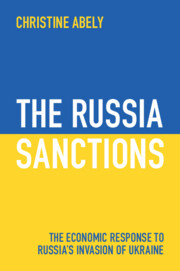136 results
Two decades of progress targeting boneseed (Chrysanthemoides monilifera subsp. monilifera): a global review to inform eradication in Western Australia
-
- Journal:
- Invasive Plant Science and Management / Accepted manuscript
- Published online by Cambridge University Press:
- 13 March 2025, pp. 1-36
-
- Article
-
- You have access
- Open access
- Export citation
First record of the sea anemone Actinia equina (Cnidaria: Anthozoa) on the Mid-Atlantic coast of the United States
-
- Journal:
- Journal of the Marine Biological Association of the United Kingdom / Volume 105 / 2025
- Published online by Cambridge University Press:
- 10 February 2025, e15
-
- Article
-
- You have access
- Open access
- HTML
- Export citation
Informing eradication feasibility: ecological context and delimitation for boneseed (Chrysanthemoides monilifera subsp. monilifera) in Western Australia
-
- Journal:
- Invasive Plant Science and Management / Volume 17 / Issue 3 / September 2024
- Published online by Cambridge University Press:
- 27 December 2024, pp. 193-207
-
- Article
-
- You have access
- Open access
- HTML
- Export citation
6 - Fear of Foreigners Mobilised
-
- Book:
- Brexitspeak
- Published online:
- 22 November 2024
- Print publication:
- 05 December 2024, pp 126-146
-
- Chapter
- Export citation
Climate and vegetation collectively drive soil respiration in montane forest-grassland landscapes of the southern Western Ghats, India
-
- Journal:
- Journal of Tropical Ecology / Volume 40 / 2024
- Published online by Cambridge University Press:
- 18 September 2024, e16
-
- Article
-
- You have access
- HTML
- Export citation
Assessing aerial biodiversity over Keller Peninsula, King George Island, Maritime Antarctica, using DNA metabarcoding
-
- Journal:
- Antarctic Science / Volume 36 / Issue 1 / February 2024
- Published online by Cambridge University Press:
- 18 March 2024, pp. 37-46
-
- Article
-
- You have access
- HTML
- Export citation
7 - Resilience
-
- Book:
- A Concise History of the Aztecs
- Published online:
- 08 February 2024
- Print publication:
- 15 February 2024, pp 246-284
-
- Chapter
- Export citation
2 - Invasion
-
- Book:
- The Russia Sanctions
- Published online:
- 14 December 2023
- Print publication:
- 21 December 2023, pp 16-26
-
- Chapter
- Export citation
Conclusion
-
- Book:
- The Russia Sanctions
- Published online:
- 14 December 2023
- Print publication:
- 21 December 2023, pp 119-122
-
- Chapter
- Export citation

The Russia Sanctions
- The Economic Response to Russia's Invasion of Ukraine
-
- Published online:
- 14 December 2023
- Print publication:
- 21 December 2023
Chapter 1 - Writing the Forgotten War I: Henry’s War, 1542–1547
-
- Book:
- England's Insular Imagining
- Published online:
- 28 September 2023
- Print publication:
- 09 November 2023, pp 8-43
-
- Chapter
- Export citation
2 - Old Allies and New Friends
-
- Book:
- Neutrality and Collaboration in South China
- Published online:
- 01 June 2023
- Print publication:
- 15 June 2023, pp 63-100
-
- Chapter
- Export citation
20 - Việt Nam and the Genocide of Champa, 1470–1509
- from Part III - The Medieval World and Early Imperial Expansions
-
-
- Book:
- The Cambridge World History of Genocide
- Published online:
- 23 June 2023
- Print publication:
- 04 May 2023, pp 523-546
-
- Chapter
- Export citation
Chapter One - Introduction
-
- Book:
- The Making of the Doric Temple
- Published online:
- 22 July 2023
- Print publication:
- 20 April 2023, pp 1-40
-
- Chapter
-
- You have access
- HTML
- Export citation

Ukraine and Russia
- From Civilized Divorce to Uncivil War
-
- Published online:
- 13 April 2023
- Print publication:
- 23 March 2023
9 - War
-
- Book:
- Ukraine and Russia
- Published online:
- 13 April 2023
- Print publication:
- 23 March 2023, pp 272-307
-
- Chapter
- Export citation
10 - Conclusion: From Cold War to Hot War
-
- Book:
- Ukraine and Russia
- Published online:
- 13 April 2023
- Print publication:
- 23 March 2023, pp 308-332
-
- Chapter
- Export citation
Quantifying Wheat Blast Disease Induced Yield and Production Losses of Wheat: A Quasi-Natural Experiment
-
- Journal:
- Journal of Agricultural and Applied Economics / Volume 55 / Issue 1 / February 2023
- Published online by Cambridge University Press:
- 13 March 2023, pp. 34-56
-
- Article
-
- You have access
- Open access
- HTML
- Export citation
27 - The War at Sea: Trafalgar and Beyond
- from Part V - Other Spheres of War
-
-
- Book:
- The Cambridge History of the Napoleonic Wars
- Published online:
- 20 December 2022
- Print publication:
- 02 March 2023, pp 563-585
-
- Chapter
- Export citation

